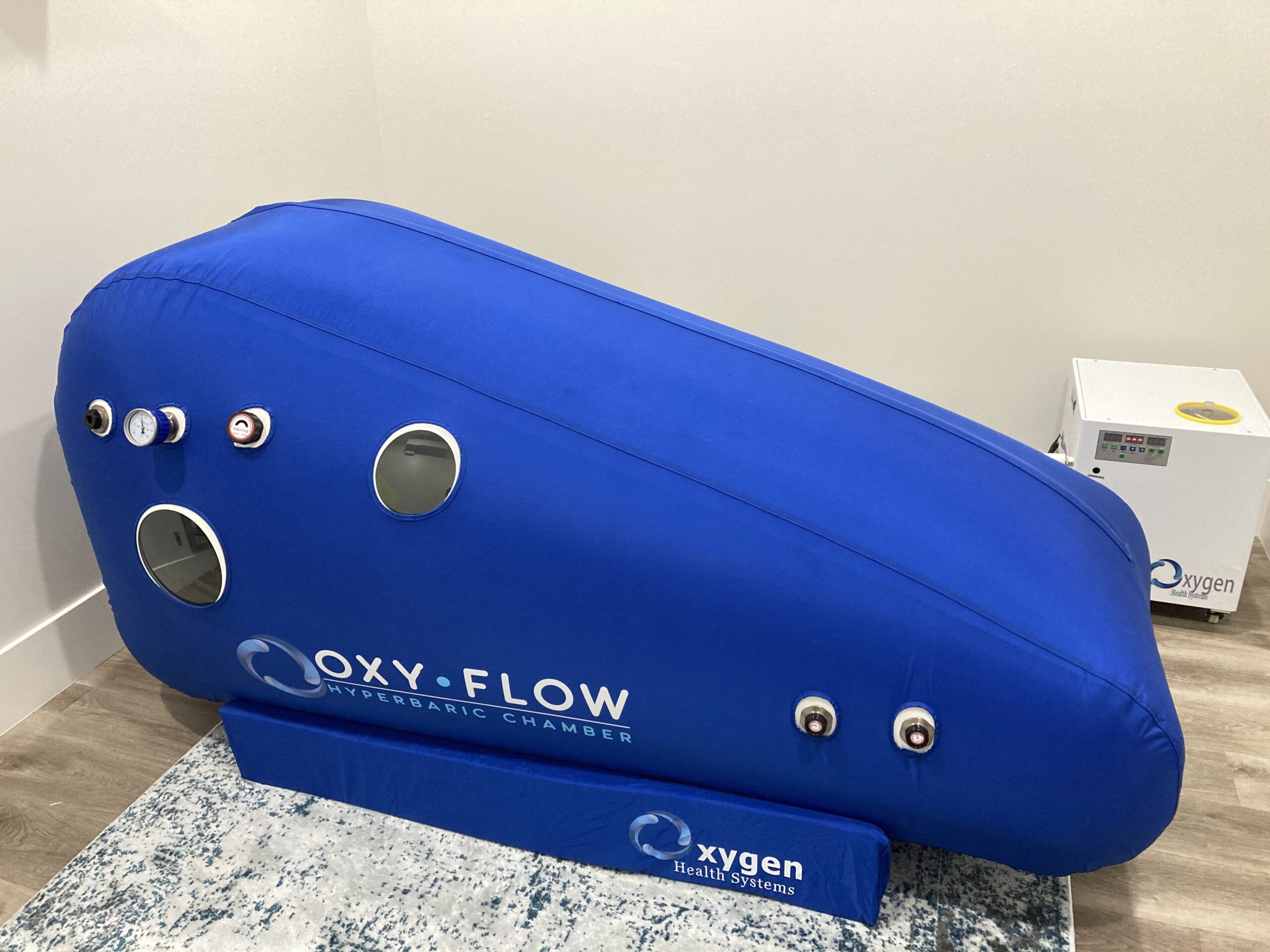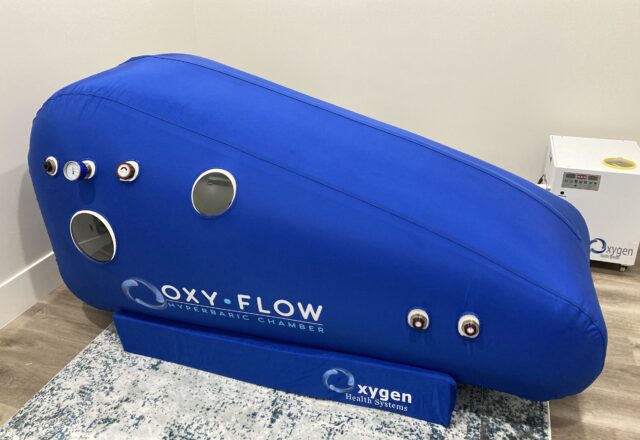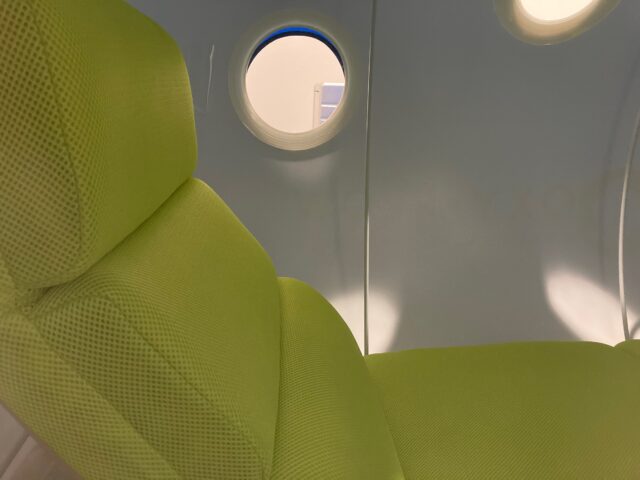
Heal with Hyperbaric Oxygen Therapy
It involves oxygen and pressure. Hyperbaric oxygen therapy is a non-invasive, natural way to promote healing in your entire body. Simply put, your body is supplied with more oxygen than it can get at normal conditions, and put under pressure that speeds up your body’s utilization of that oxygen.
Body tissue needs oxygen to function. When tissue is damaged, it requires more oxygen to heal. If red blood cells are deprived of oxygen, they cannot carry out necessary functions that keep our bodies safe and healthy.
How it works / What it does:

In a hyperbaric chamber, you are delivered 97% oxygen in an environment with increased pressure.
Now for a little math, stay with me. At sea level, atmospheric pressure is 760 mmHg (millimeters of mercury) which is equivalent to 1 ATA, (atmospheric absolute). Because air consists of only 21% oxygen, when we breathe, we only get 160 mmHg of oxygen. The pressure in the hyperbaric chamber can be increased to 1.3 ATA, or 1.4 ATA if comfortable, raising the total pressure to 988 mmHg.
Under pressure, your lungs are able to accumulate more oxygen and carry it to the rest of the body through red blood cells. This extra availability of oxygen stimulates healing and fights infection that would not be possible under regular air pressures.
Hyperbaric oxygen therapy is nothing new. A British physician in 1662 created an airtight chamber compressing and decompressing air pressure through oxygen valves. And while his patients likely never received any benefits from the new modality, it was the first ever documented use of a chamber changing atmospheric pressures. Later in the 1800s is when hyperbaric chambers began to spread across Europe. In the early 1900s, hyperbaric therapy began to gain popularity in the United States to treat various diseases. It was utilized by the US Navy to treat divers of decompression sickness, also known as “the bends” when they surfaced too quickly. Hyperbaric therapy still holds that use today along with many more and has proven to treat wounds and diseases that are stubborn and difficult to treat otherwise.
Who can benefit from hyperbaric oxygen therapy:
In addition to treating deep-sea divers, oxygen delivery under pressure can improve quality of life for those with acute or chronic issues such as:
- air or gas embolism
- carbon monoxide poisoning
- gas gangrene
- crush injury
- compartment syndrome
- decompression sickness
- restricted blood flow (ischemia)
- significant blood loss / anemia
- intracranial abscess
- soft tissue infections
- bone infections (osteomyelitis)
- radiation injury
- skin grafts and flaps
- thermal burns
Proven benefits:
Hyperbaric oxygen therapy helps heal damaged tissue. When injuries occur, the body goes through various phases of healing. This begins with the hemostasis phase where the body tries to stop the bleeding. Second is the inflammatory phase to kill bacteria. Next is the proliferative phase to fill the wound. Finally is the maturation phase where the body’s collagen and strength begin to come back. The last phase can take years to complete depending on various conditions. With the body saturated by oxygen, the natural healing process is sped up.
Encouragement of healing may stimulate collagen production. Studies have had positive outcomes demonstrating that production of collagen increases skin elasticity and reduces the visibility of fine lines and wrinkles. Now that’s a win.
Another proven benefit of sitting in a hyperbaric chamber is combating bacterial and viral infections. Oxygen supplied to tissues in high concentrations helps tissue fight off infection as well as increase the availability of white blood cells. White blood cell circulation can also bring down swelling.
Recent studies have suggested that hyperbaric oxygen therapy may repair nerve damage from traumatic brain injuries (TBI), concussions, and stroke, even years later. Traumatic brain injuries can result from any kind of penetration, impact, blast, or rapid acceleration or deceleration. Inflammation and stress impair cognitive function, significantly more so after trauma to the head has occurred. Using a hyperbaric chamber can reduce inflammation through tissue oxygenation and improve neurological function of the central nervous system. Fibromyalgia, a chronic condition characterized by widespread muscle pain and tenderness, fatigue, poor sleep, memory, and mood, may also be treated with hyperbaric oxygen therapy.
Improve your quality of life. Heal acute and chronic injuries, improve general health, sleep quality, emotional distress, and more. These benefits have all been demonstrated through consistent use of hyperbaric oxygen therapy.
Session details / what to expect:
Now that you know how you can benefit from hyperbaric oxygen therapy, here’s a few things you can expect for when you arrive for a treatment.
 Unlike other hyperbaric chambers, our chamber is built with an internal steel frame making for easy entry and no concern of the chamber collapsing on you. You will have the option of receiving oxygen through a face mask or nasal canal. Adjust the lounge chair within the chamber to your comfort level from lying down to sitting upright and everything in between. The two windows on either side help minimize feelings of claustrophobia. The chamber includes an internal and external pressure gauge so the user can note the pressure they are at. In addition, there is an internal emergency pressure relief valve for the user in case of an emergency or the user begins to feel uncomfortable. The relaxing sessions will last 60 minutes. It is not uncommon to feel tired after the treatment. For more details on planning your session, visit our webpage.
Unlike other hyperbaric chambers, our chamber is built with an internal steel frame making for easy entry and no concern of the chamber collapsing on you. You will have the option of receiving oxygen through a face mask or nasal canal. Adjust the lounge chair within the chamber to your comfort level from lying down to sitting upright and everything in between. The two windows on either side help minimize feelings of claustrophobia. The chamber includes an internal and external pressure gauge so the user can note the pressure they are at. In addition, there is an internal emergency pressure relief valve for the user in case of an emergency or the user begins to feel uncomfortable. The relaxing sessions will last 60 minutes. It is not uncommon to feel tired after the treatment. For more details on planning your session, visit our webpage.
If above all you are still not convinced, I mean, I’ve heard Michael Jackson used to sleep in one of them so they have to at least be pretty comfortable.
Written by Danielle Barker
